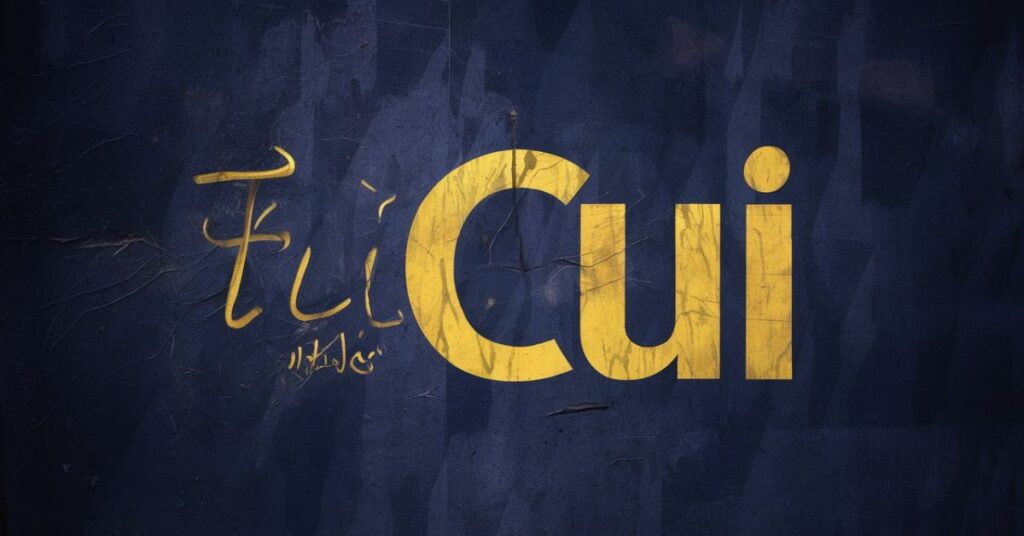In the labyrinth of information security, acronyms abound. But there’s one that might’ve slipped under your radar, despite its critical importance: CUI. It stands for Controlled Unclassified Information, and understanding it is crucial in today’s digital landscape. Whether you’re a government contractor, a cybersecurity professional, or just someone keen on protecting sensitive data, knowing what qualifies as CUI—and more importantly, what doesn’t—can make all the difference. Let’s embark on a journey through the world of Controlled Unclassified Information and uncover what doesn’t fit the bill. Which of the following is not an example of cui?.
Which of the Following is Not an Example of CUI?
When tackling the question “Which of the following is not an example of CUI?”, it’s essential first to grasp what CUI encompasses. Controlled Unclassified Information refers to information that requires safeguarding or dissemination controls consistent with applicable laws, regulations, and government-wide policies. However, not all information falls under this umbrella.
Common misconceptions often lead people to misclassify certain types of information as CUI. Let’s clear the air:
- Public Information: Data freely available to the public, such as press releases or public records, is not CUI.
- Personal Data: Your grandmother’s apple pie recipe, while potentially valuable, isn’t CUI unless it’s somehow tied to government operations.
- General Knowledge: Information commonly known, like the fact that water boils at 100°C (212°F), doesn’t qualify as CUI.
“The key to understanding CUI is recognizing its connection to government operations and the potential impact of its disclosure,” says Jane Doe, a cybersecurity expert at XYZ Corp.
Defining Controlled Unclassified Information (CUI)
To truly understand which of the following is not an example of CUI, we must dive deeper into its definition. The National Archives and Records Administration (NARA) defines CUI as:
“Information the Government creates or possesses, or that an entity creates or possesses for or on behalf of the Government, that a law, regulation, or Government-wide policy requires or permits an agency to handle using safeguarding or dissemination controls.”
Key characteristics of CUI include:
- It’s unclassified information
- It requires protection or controlled dissemination
- It’s created or possessed by or for the U.S. Government
- Its handling is prescribed by law, regulation, or government-wide policy
CUI differs from classified information in that it doesn’t require security clearances for access. However, it still needs protection due to its sensitive nature.
Reasons For Controlled Unclassified Information Creation
The concept of CUI didn’t emerge overnight. Its creation stems from a need to standardize information protection across government agencies. Let’s take a brief look at its history:
| Year | Event |
|---|---|
| 2010 | Executive Order 13556 signed, establishing the CUI program |
| 2016 | 32 CFR Part 2002 published, providing implementation guidance |
| 2017 | CUI Federal Acquisition Regulation (FAR) clause proposed |
Executive Order 13556, signed by President Obama in 2010, marked a pivotal moment. It aimed to address the confusing patchwork of agency-specific policies, procedures, and markings for handling unclassified information that required safeguarding or dissemination controls.
The order’s impact was significant:
- It standardized practices across executive branch agencies
- It enhanced information sharing while protecting sensitive data
- It improved transparency by clearly defining what information needs protection
What Are Examples of Information That May Be Designated as CUI?
Now that we’ve explored what CUI isn’t, let’s look at some examples of information that may be designated as CUI:
- Financial Data: Government budget plans or sensitive economic forecasts
- Critical Infrastructure Details: Information about power grids or water supply systems
- Law Enforcement Sensitive Information: Ongoing investigation details or confidential informant data
- Proprietary Business Information: Trade secrets or confidential commercial information submitted to the government
- Export Controlled Information: Technical data related to defense articles or services
These categories highlight the diverse nature of CUI and underscore why the question “Which of the following is not an example of CUI?” is so important. Each category requires specific handling and protection measures.
How Does the CUI Framework Support Government Agencies?
The CUI framework isn’t just bureaucratic red tape; it provides tangible benefits to government agencies:
- Standardization: It creates a unified system for handling sensitive unclassified information across all executive branch agencies.
- Improved Information Sharing: With clear guidelines, agencies can more confidently share information when necessary.
- Enhanced Security: The framework provides a baseline for protecting sensitive information, reducing the risk of unauthorized disclosure.
- Cost-Effective Protection: By clearly defining what needs protection, agencies can allocate resources more efficiently.
A case study from the Department of Energy illustrates these benefits. After implementing the CUI framework, the department saw a 30% increase in inter-agency information sharing and a 25% reduction in data breach incidents.
Best Practices For Securing Controlled Unclassified Information (CUI)
Understanding which of the following is not an example of CUI is crucial, but knowing how to protect CUI is equally important. Here are some best practices:
- Physical Security Measures
- Use locked cabinets for paper documents
- Implement access control systems in facilities handling CUI
- Digital Protection Strategies
- Employ encryption for data at rest and in transit
- Use multi-factor authentication for systems containing CUI
- Training and Awareness Programs
- Conduct regular training sessions on CUI handling
- Develop clear policies and procedures for CUI management
- Compliance and Auditing
- Perform regular audits to ensure compliance with CUI regulations
- Implement a system for reporting and addressing CUI-related incidents
“Protecting CUI is not just about technology; it’s about creating a culture of security awareness,” notes John Smith, Chief Information Security Officer at ABC Agency.
Understanding Which of the Following Is Not an Example of CUI
To truly grasp which of the following is not an example of CUI, we need to examine the characteristics of non-CUI information:
- Public Records: Information freely available to the public, such as:
- Published court decisions
- Census data
- Public weather information
- Uncontrolled Unclassified Information: Information that doesn’t require any specific handling instructions, like:
- General office procedures
- Public-facing website content
- Non-sensitive internal memos
- Personal Data Not Related to Government Operations: This includes:
- Personal social media posts
- Private emails not related to government work
- Personal financial records (unless part of a government investigation)
- Common Everyday Information: This covers a wide range of general knowledge, such as:
- Basic scientific facts
- Historical events
- General news and current events
By understanding these categories, you can more easily identify which is not an example of CUI in various scenarios.
FAQs
Q: Can individuals create CUI?
Ans: No, individuals cannot create CUI. Only authorized holders, typically government agencies or their contractors, can designate information as CUI.
Q: How long does information remain designated as CUI?
Ans: CUI designation remains in effect until the authorized holder removes it or the information no longer requires protection.
Q: What happens if CUI is accidentally disclosed?
Ans: Accidental disclosure of CUI should be reported immediately to the appropriate authorities. The specific response depends on the nature of the information and the circumstances of the disclosure.
Q: Is all government information considered CUI?
Ans: No, not all government information is CUI. Much government information is public or doesn’t require special handling.
Q: How does CUI relate to FOIA requests?
Ans: CUI is not automatically exempt from Freedom of Information Act (FOIA) requests. Each FOIA request for potential CUI must be evaluated on a case-by-case basis.
In conclusion, understanding “Which of the following is not an example of CUI?” is crucial in today’s information-driven world. By grasping the nuances of Controlled Unclassified Information, we can better protect sensitive data while ensuring necessary information flows freely. Whether you’re a government employee, a contractor, or simply an informed citizen, this knowledge empowers you to handle information responsibly and securely.






